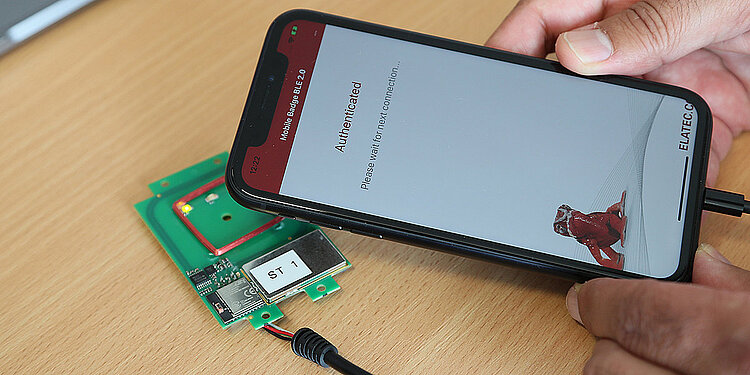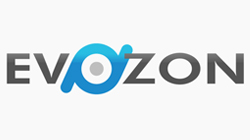High performance is only possible with top software Why RFID software needs to be configurable and flexible.
You need an RFID solution that precisely meets your standards, functionality needs and IT infrastructure requirements. It also need to be flexible enough to enable modifications to be made quickly and easily after initial integration. We can help. Our goal is for your ELATEC RFID solution to work optimally, deliver the best results and provide cost savings at all times. This is why we give you a high-performance, flexible and sustainable software package.
No other RFID reader on the market can be customized as quickly as our products. Many modifications can be made within one day!
Want to see for yourself?
Comprehensive, beneficial and straightforward: our Software Development Kit
The Software Development Kit – the DevPack – and its components form the basis for every efficient RFID solution. With it, you can modify the standard configuration of our products in virtually any way you’d like. Or, have us modify them for you whichever you would prefer. It’s up to you. In addition, we’ll make sure you receive regular updates. These provide optimizations and security modifications as well as new functionalities. Continued development and enhancements are included in your package so you always have the best possible solution. So you always have the best possible solution.
What's inside the DevPack
ELATEC Head of Support Aden Abazovic unpacks our RFID Reader Software Development Kit. The TWN4 DevPack includes our powerful AppBlaster and Director tools, along with user guides and reference documents, drivers, preconfigured firmware images, templates, and more.
Need guidance on the TWN4 DevPack?
The top performers in our all-inclusive DevPack
AppBlaster Tool
The core of our Software Development Kit: an all-purpose configuration module. For reading and writing cards, tags, modifying formats, defining output formats (decimal/hexadecimal) and generating output logs. You can specifically select all supported transponders and tags, manage card storage and configure user feedback (visual and/or auditory). You will receive two to three updates from us every year. Feature requests enable us to incorporate your feedback in product advancement, so you get what you need. Internal information (such as encryption keys) remains under your control, so you can remain autonomous and independent. Because the internal information (keys) remain in-house.

The AppBlaster is based on an intelligent, multi-stage concept with three options. Results are provided as either a file (image) or on a configuration card; for the latter you’ll need the TWN4 Config Reader. You can find more details in the support section of the documentation and videos.
The options are:
- Complete firmware file/standard configuration (program firmware image)
- Configurable firmware (configurable project)
- Customer-specific application (source code project)
Option 1 is the standard configuration, Option 3 is suitable for special requirements in complex environments. Whichever option you choose, thanks to version control, you can keep track of your configurations with optimal management, accurately and at any time.
Additional Tools
Director Tool
Aids the integration of our products in your target application. Includes test and diagnostic tools for the purpose of reading series and version numbers before and during operation. It can verify the functionality and functional scope of readers, check interplay and tracking with other components or tags, and test interfaces. It’s flexible and reliable.
Tool for antenna development
Development and customization of your specific antennas for our TWN products with external antennas, such as the TWN4 Core or TWN4 Nano module. Optimization of distance and power for readers. Precise and practical.
Tech Tracer Tool
Responsible for the analysis of transponders for tracking and identification of transponder technologies. Helpful and groundbreaking.
Flash Tool
Supports the obligatory configuration and programming. Additionally, enables process automation. Efficiency-boosting and secure.
Transponder Memory Dump
This tool reads the transponder data content. Reliable and fast.
After-market customization and modificationWe give you the greatest possible freedom for tracking assets with updates and individual changes. You have the option of doing these yourself or letting us do it for you – on site, or remotely. It’s trouble-free and dependable either way.
We quote...
For mobile access via smartphone

Use our apps
The Mobile Badge BLE 2.0 app and NFC app are available in the Apple App Store and Google Play Store (NFC currently available for Android only). The latter is currently only available for Android. The standard version apps are free.
Customized Solutions
We would be happy to develop customized software and mobile applications for your project-specific requests, such as BLE, NFC, HCE, or platform-specific middleware application solutions (Windows, Linux, mobile, and others) and apps. Just let us know – we’ll take care of it for you. Guaranteed!
You have questions. We have answers.
When you are planning to implement RFID technologies to exchange or store information, you must first assess the level of encryption required by your application and the exact channel where this needs to be enforced. For example, you may require encryption of data exchanged between the reader and the host system or via the air interface between the RFID reader and the card or device. In some cases, data must be encrypted at both interfaces. It is important to first analyze where exactly in your architecture the encryption is required and then to establish the strength of this security. Then, you need to make sure the reader you select has the capability to support the encryption you need and to execute cryptographic algorithms.
Many types of contactless RFID transponders have the ability to store data within their memory segments and encrypt or lock these segments with cryptographic keys. The best card reader is one that can not only decrypt the memory segments and access the data but also provides an easy means for the end-user to carry out this operation themselves. In many instances, the end-users have their own customized cryptographic keys for their credentials and are unwilling to share these keys with the card reader provider. Therefore, having the capability to load custom keys by someone other than the card reader manufacturer becomes essential. This can be facilitated in multiple ways. For example, the manufacturer can implement high-level APIs and allow the user to write custom applications for the card reader. Alternatively, the manufacturer could enable the customer with a graphical user interface to enter keys used to access data sectors. ELATEC readers support both approaches.
In a typical scenario, the card reader behaves as a medium to facilitate data collection and transfer between the contactless or contact-based transponder and the host system. The host system can either be an endpoint that locally validates the credential presented to it, or it can be a microcontroller that sends data over the network to the cloud or a database for validation and authentication. The first step is assessing whether the need for encryption is between the RFID media (e.g., card or device) and the reader or from the reader to the host. If it is the former, you need an RFID reader that supports the appropriate credentials, such as an ELATEC TWN4 RFID reader.
In some cases, personal information such as name, address, date of birth or biometric data can be stored within the credential—for example, when smart cards or passports are used as credentials. In this case, encrypting the exchange of such data both between the credential and the reader as well as the reader and the host becomes critical. Moreover, the card reader must support encryption algorithm engines (such as AES, DES, 3DES) or the capability to implement custom algorithms for ease of integration. Typically, in cases where smartcards or contact-based credentials are used, the host system drives the communication in its entirety. So, the card reader must also have:
- Software capabilities such as Personal Computer Smart Card (PCSC) or Chip Card Interface Device (CCID) mode of communication. The availability of drivers to facilitate communication with the host also enables easy software integration.
- Hardware support for communication standards such as ISO7816 and the presence of Secure Access Modules (SAM) slots and other contact-based interfaces.
